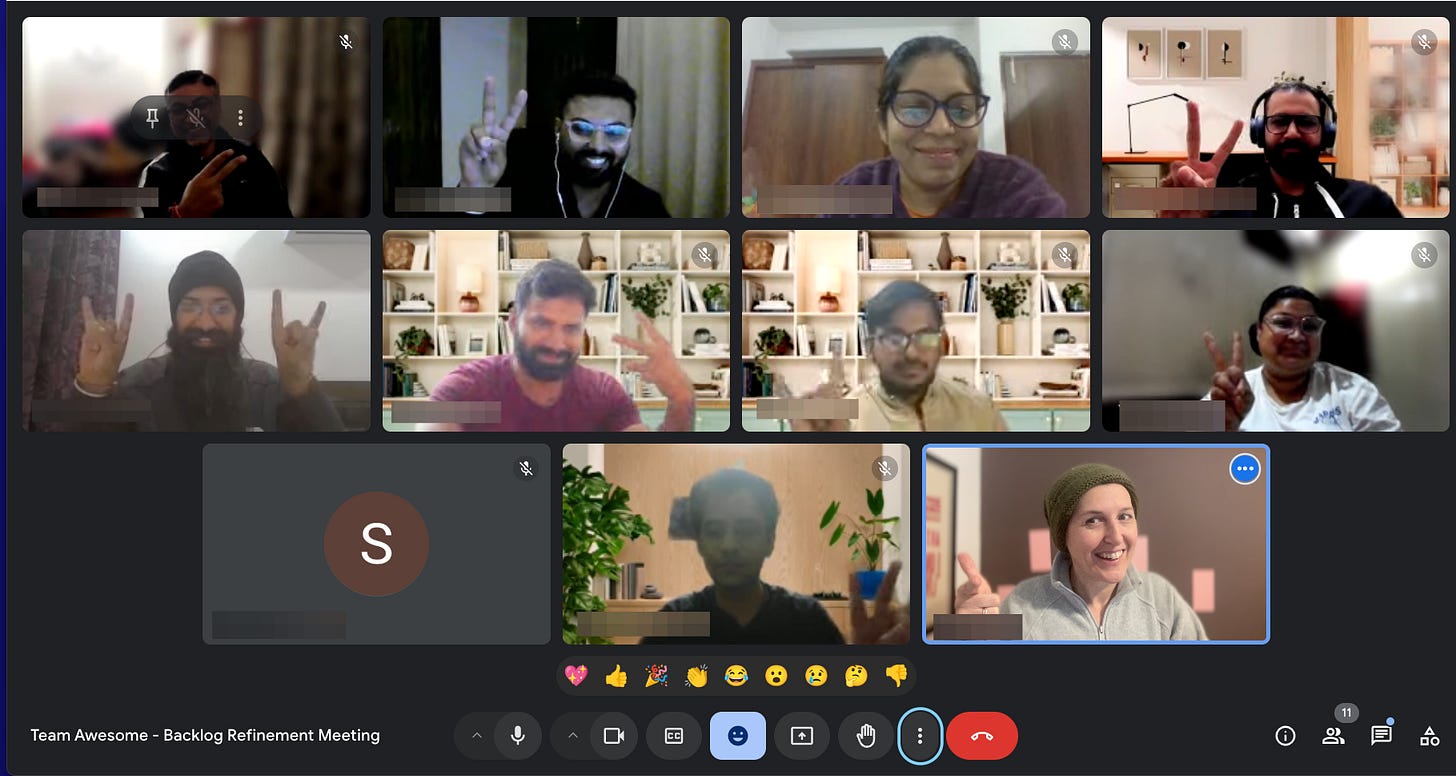When I first stepped into the world of remote team management in 2013, I was a fresh-faced Customer Solutions Advocate working with Scrum teams in India. The challenges were immense: an 11.5-hour time difference, just ONE HOUR of weekly interaction, and significant language and cultural barriers. As a newcomer to product management and Scrum methodologies, I felt like I was drowning in a sea of obstacles.
The Initial Struggle
The time gap was ridiculous. When I started my workday, my team in India was heading home. Our ONE HOUR weekly meeting became a frantic attempt to cram in updates, requirements, and decisions. It was overwhelming, to say the least.
Desperate for solutions, I scoured the internet, attended Agile community groups, and sought advice from colleagues. The responses I received were disheartening:
"Buy a lot of plane tickets" - an impossible solution for our small company with limited resources.
"Look for another job" - a defeatist attitude suggesting that working with remote teams was doomed to fail.
These answers were unacceptable to me. I knew there had to be a better way.

The Turning Point
Through trial and error, I developed three key strategies that transformed our remote collaboration:
1. Embrace Vulnerability: Be Authentically Human
I made a conscious decision to be the first to show vulnerability. Whether it was admitting to a mistake or acknowledging when I wasn't at my best, I created a safe space for genuine interaction. This approach broke down barriers and built trust within the team.
2. Maximize Meeting Effectiveness
I revolutionized our meeting structure. Instead of 40-minute monologues followed by rushed Q&As, I transformed our sessions into collaborative problem-solving workshops. We focused on:
Gathering and unpacking challenges
Ideating solutions together
Making decisive actions
This shift ensured that our limited time together was productive and engaging.
3. Leverage Impactful Asynchronous Communication
My game-changer was the introduction of 5-minute onboarding videos. Sent 48 hours before meetings, these short, focused videos allowed team members to:
Process information independently
Have preliminary discussions
Come to meetings prepared with targeted questions
This approach dramatically improved our meeting efficiency and overall collaboration.
The Unexpected Breakthrough
These strategies didn't just improve communication—they fundamentally transformed our team dynamics. We experienced:
Increased trust and authenticity
More efficient and productive meetings
Higher team engagement and ownership
Faster problem-solving and decision-making
What started as a struggle became a journey of discovery, leading to high-performing cross-continental teams despite the odds.
Want More?
If you liked this segment and want a juicier scoop on The Untold Secrets of Leading Global Product Teams, this post was inspired by the episode that just dropped yesterday on Tamar Stolz’ The Unstoppable Product Pioneer Podcast! You can listen to her AMAZING podcast for business and product leaders wherever you listen to podcasts. Here’s the YouTube link, and the Substack link!
Join Me in Transforming Your Meetings
If you're facing similar challenges or simply want to elevate your team's collaboration, join my FREE LIVE WORKSHOP on January 31st: "Your Meetings Don't Have to Suck!"
Together, we'll explore more strategies to facilitate success in your remote teams.
Remember, effective collaboration isn't about perfect processes—it's about human connection. Stay curious, stay collaborative, and keep facilitating your success!











Share this post